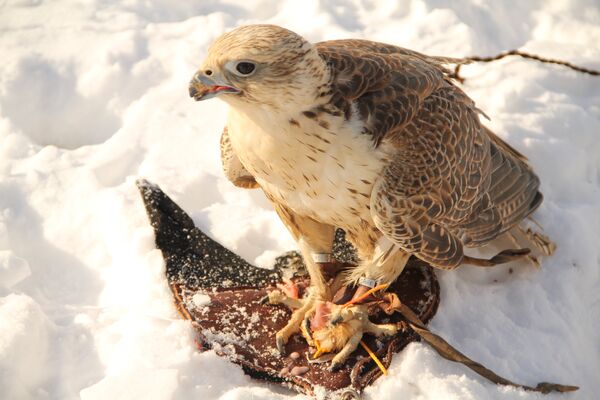Noble birds of prey, such as falcons and goshawks, have been living and hunting with humans for centuries. In Russia, falconry gained prominence as a sport during the reign of Tsar Alexei Mikhailovich, the father of Peter the Great. These days, falcons and other raptors have more important roles to play, including scaring crows away from jet engines at airports.
In the Kolomenskoye estate museum on the outskirts of Moscow, visitors can find out about the history of falconry and its present day usage.
Keeping falcons fit

Kolomenskoye’s expert falconers Viktor Fyodorov and Vladimir Skripkin release their birds to fly every day: Regular exercise is crucial to a raptor’s fitness, to prevent it from losing its flying skills and its muscles from deteriorating. With the hood and jess straps removed, longwings are free to take off.
“It’s springtime now, and with its hormones raging, a bird might fly away,” Fyodorov says. The Kolomenskoye Park’s falcons rarely leave for good. But they occasionally end up on the other side of the river or in a residential neighborhood close by, and the falconers have to track them and bring them back home. “Every bird has its own personality, just like a person or a dog,” Fyodorov says. “One bird may be very calm, while another is temperamental and moody.”
Kolomenskoye’s raptors have their hunting instincts suppressed. But nature manifests itself every now and then, and it has been known for them to target a duck from a local pond, or even a cat from a nearby residential block.
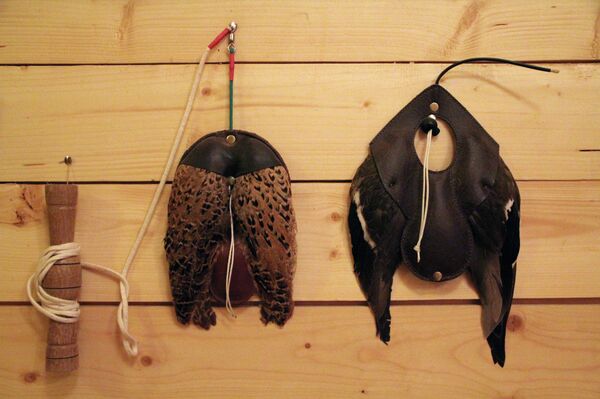
Living in a park environment is not a bed of roses for the falcons. Their trainers are always at odds with dog owners walking their pets here. Falcons are afraid of dogs, and this fear may sometimes prevent them from returning home after an outing. But small dogs may themselves become a target for the birds.
Fyodorov is watching one of his falcons soaring in the sky. It has been out long enough. Now it is slowing down, with its beak open. Time to call it back. The falconer reaches for his bag and takes out mouse flesh – a well-deserved meal for the bird. He fastens the meat onto a lure and tosses it in the air. “The falcon’s visibility range is two kilometers,” he explains. “And the raptor knows that this has some food attached to it.” Some birds descend immediately. Others take their time, pretending for a while not to see, but then do a sudden dive-bomb to land right on the bait.
Weighing is another important ritual to perform after the longwing has been out and about. Care should be taken to prevent weight loss in the bird. But neither should a bird be overweight, because a raptor that eats too much may not feel hungry enough to return home.
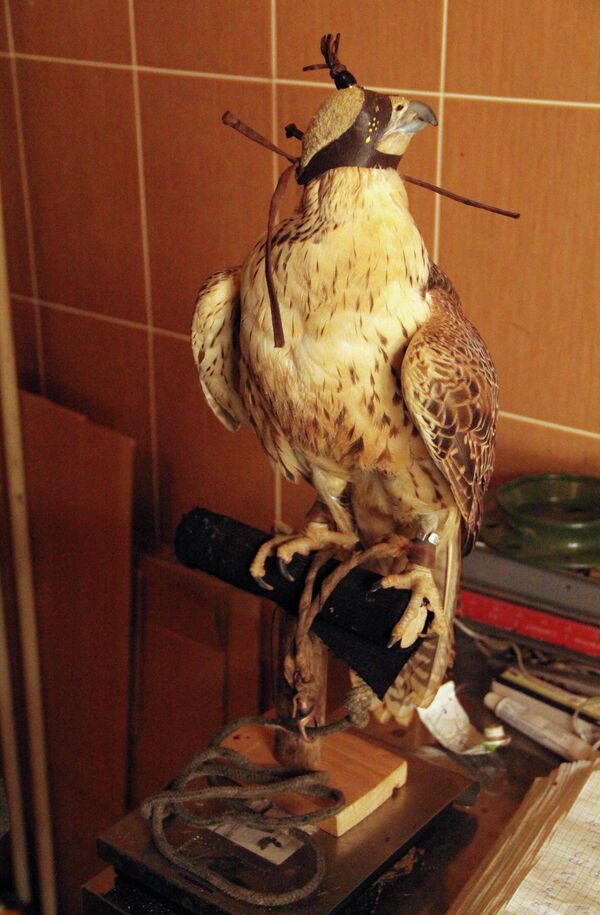
Surviving a “biological weapon” attack
In Kolomenskoye, visitors can get some idea of what falconry must have been like back in the tsarist era. A former royal estate, it was one of the main sites where Russian tsars practiced falconry.
The local raptor sanctuary is home to 11 tame birds, including saker falcons, several varieties of goshawks, and an eagle owl. Fyodorov and Skripkin are the two falconers in charge.
Fyodorov, 50, an engineer by training, is a well-seasoned trainer; birds have been his passion from an early age. “I often climbed trees and could stay up there for days just to take a picture [of a bird] or to record [its] voice,” he recalls. “I’d even go to the toilet in a jar so as not to have to climb down.” These days, Fyodorov is often invited as an expert to international exhibitions and to hunting sessions in Europe and the United Arab Emirates.
Skripkin, 38, is a neophyte, by contrast. He used to work as an engineer, but one year ago, while walking on the street, he bumped into a friend with a raven and ended up falling in love with the birds. This led to him changing his engineering job for something he loved. His favorite bird is the buteo Lada. Being the smallest variety of goshawks, the buteos are also the easiest to handle, so startup trainers often try their hand at a buteo before taking on a larger raptor.
Lada had a bizarre experience recently. A robin she was chasing deployed its secret weapon, excrement, to get away. Curiously, this kind of “biological” weapon works without fail. And it’s not about squeamishness. It is just that enemy excrement acts like glue on the plumage, preventing the raptor from flying properly until it has cleaned the droppings off.
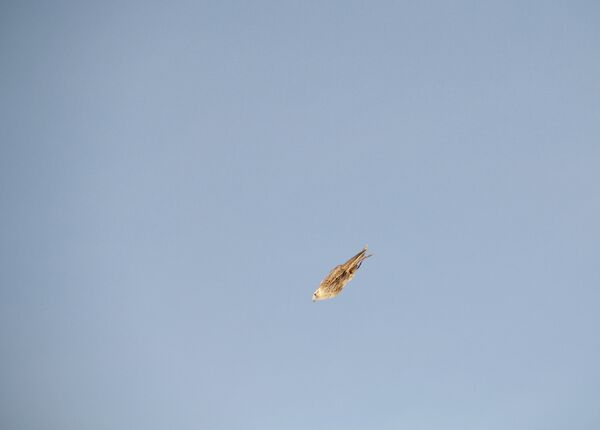
Sharp talons
Falconry is a beautiful and complex process, Fyodorov tells the sanctuary’s visitors. Russian tsars habitually went hunting accompanied by a large retinue, complete with hounds and mounted chasseurs. All the men had a raptor sitting on their shoulder or forearm. Dogs are the first to track down quarry – say, a partridge. But the bird is usually not in a hurry to lift off, and will only take to the air when startled by drumming. A falcon sent in pursuit soars up into the skies and glides, waiting for the right moment to attack.
“It is a spectacular thing to see,” Fyodorov says with enthusiasm.
On spotting a bird or a hare on the ground, the falcon will swoop down rapidly (the peregrine falcon, for instance, can dive at speeds of up to 80 meters per second) and tears into its prey with its talons. The steep descent and the sharp talons, especially the one on the thumb-like back toe, often leave quarry torn to pieces.
A hunting bird is no hunting dog, though. It will not bring the game to its owner. Nor will it precipitate back home. It will simply fly away from the scene, leaving the game for the hounds to pick up.
After the hunt, tame falcons are usually found by their owners thanks to the small bells attached to the birds’ legs. These days, many hunters use tracking devices for that purpose, while in the East, rich falcon owners might use a helicopter to spot their birds from the air.
Patron saint of falconry
The Slavs practiced falconry from their early days. During the reign of Ivan I, also known as Ivan Kalita, the court acquired a special agency to administer all related issues. This fact alone testifies to the seriousness of the prevailing attitude to falconry. Moreover, post-Kalita royal wills would mention the agency in a separate line.
Birds of prey, especially gyrfalcons, were highly prized in Russia. Legend has it that on losing his favorite gyrfalcon during a hunting session, Ivan the Terrible threatened the court falconer Trifon Patrikeyev with execution unless the bird was found within three days. And so Trifon set out to search for the bird. He spent the following three days looking, but to no avail. Resigning himself to his fate, he went to bed and dreamed of his patron saint, who had a gyrfalcon on his shoulder. He handed the bird over to him, saying “Here’s your falcon.” The next morning, the falconer found the lost bird on a tree branch nearby. The overjoyed Patrikeyev then had a church built in his saint’s honour. Constructed more than 500 years ago, this small stone church in northern Moscow is still with us today. In the Soviet era, it housed a children’s clinic, and was thus saved from destruction.
In Russian icons, St Tryphon is often represented with a falcon and is particularly revered by hunters.
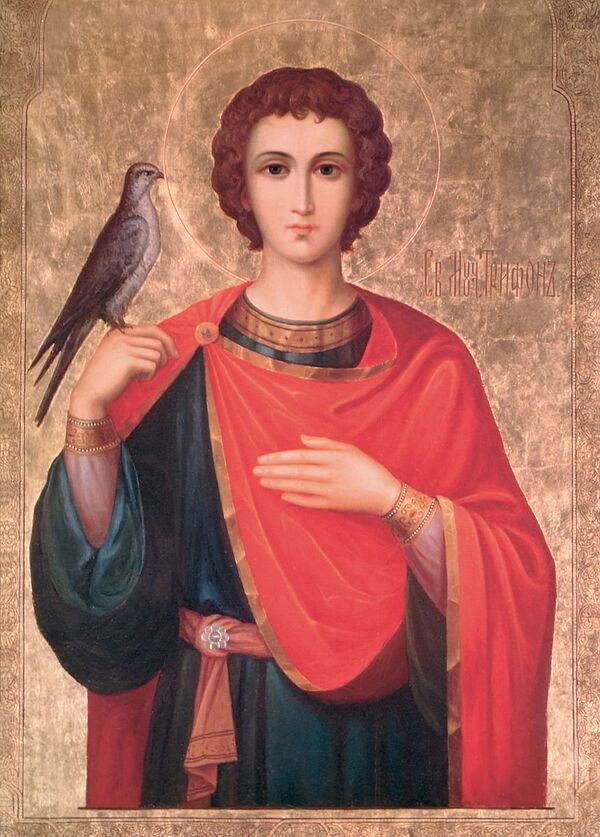
Indulging in favorite pastimes
In Russia, interest in falconry reached its peak under Alexei Mikhailovich, Peter the Great’s father. Tsar Alexei had a collection of 3,000 falcons and hawks. Why so many? First of all, it was a matter of prestige. Secondly, each raptor specialized in a particular type of quarry – birds, hare, etc. According to historical sources, it was Alexei Mikhailovich’s teacher, Boris Morozov, who developed the young crown prince’s interest in falconry, along with influencing him in many other ways.
Alexei Mikhailovich took great pride in his falcon collection and zealously protected it from curious onlookers. In a rare gesture of honor, he once let a Saxony envoy see several of his birds. In those days, there was little trust of Europeans in Russia, especially for practicing Catholics. So even high-ranking European envoys were not normally allowed to see the Russian Court’s women and birds, for fear of their evil eye.
But the conversation with the Saxon diplomat must have inspired Alexei so much that he ended up showing him some of his most beautiful birds and even allowed him to make a sketch of them.
Falcons were seen as an important diplomacy tool at that time. The Russian tsar would send falcons East and West, as gifts to fellow monarchs. It was a precious present to receive.
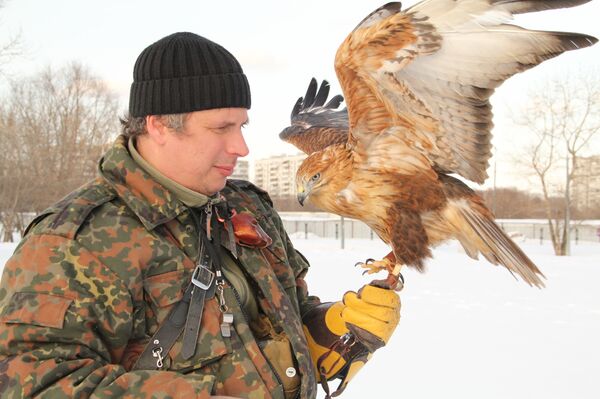
Persia’s Shah Abbas II negotiated with the Russian Crown to allow Russian merchants to sell birds of prey to foreigners. And Tsar Alexei, with his keen interest in various sciences, got personally involved in the compilation of a compendium of falconry regulations.
There was a special department within the Secret Services Ministry that dealt with falconry during Alexei Mikhailovich’s reign. The tsar’s gyrfalcons – his favorite species – were all dressed with regal sumptuousness. Here is how a contemporary Austrian diplomat described them: “The gyrfalcons wore white hoods made from splendid fabric and had long golden ropes on their left legs. The best one had a golden ring with large rubies on its right leg.”
Birds of prey for the Russian Court were sourced mainly from the country’s north, including Siberia and the Arkhangelsk Province. Their transportation to Moscow was carefully regulated. Special felt-lined boxes were provided to cushion the journey. Tax collectors in escort were prescribed to take the utmost care of the birds in their charge, giving them regular meals and preventing the coachmen from riding too fast on bumpy roads.
To feed the tsar’s large bird collection, the serfs were obliged to pay what was known as the pigeon tax. Each peasant household would give two pigeons, which would be brought to a loft and then offered as food to the Court’s falcons.
VIP treatment was given to the falconers as well – theirs was seen as a prestigious job, and one not without risk.
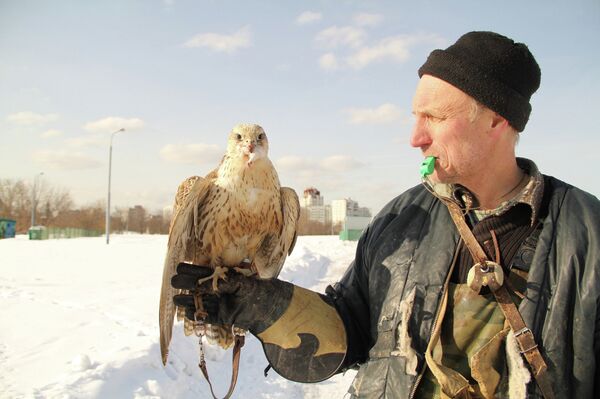
Modern-Day Responsibilities
Alexei Mikhailovich’s son and successor, Peter I, had other fish to fry. Too busy warring the Swedes, the Turks and the Persians, he had little time for falconry. The royal falcon collection diminished over time, partly due to natural reasons, namely the birds’ relatively short life span. As for the falconers, Peter reasoned that the upkeep of the 300-member staff employed by his father was somewhat of an extravagance, and had them transferred to his “toy” regiments.
Yet the old craft of falconry lives on in Russia, and is even used by the modern-day Russian state. In the Kremlin, there is a special Federal Guard Service unit that employs falcons, for example. Their responsibilities include scaring off crows and keeping the pigeon population down.
Falcon units exist at some Russian airports as well, including Moscow’s Domodedovo. Goshawks are kept there to scare off smaller birds – so as to prevent them from ending up in a jet turbine or hitting a plane’s cockpit’s window.
